The images that Dante conjured up in his epic narrative poem have inspired artists and scholars for centuries.
It is hard to imagine that a country as rich in history and culture as Italy could trace a great deal of its heritage back to one single person. However, that is exactly the case with Dante Alighieri. Regarded as The Supreme Poet, Dante's Divine Comedy is considered by many as Italy's most important literary work.
Dante's depiction of the afterlife through the Inferno, Purgatory and Paradise is one of the most influential pieces of literature in history. It became the centerpiece for what is now the modern Italian language and changed the way that people thought of religion and the afterlife. Though all three books of Dante’s epic are influential, Inferno is regarded as the most important in terms of its influence on religion and art.
Never before had someone painted such a clear picture of what hell was like. The horrible images that Dante created in his poem have inspired artists and scholars for centuries. Here are some of the great artists who have been inspired by Dante’s work and have shown his influence through what they create.
Artists Inspired by Dante’s Divine Comedy
Sandro Botticelli (1445-1510)
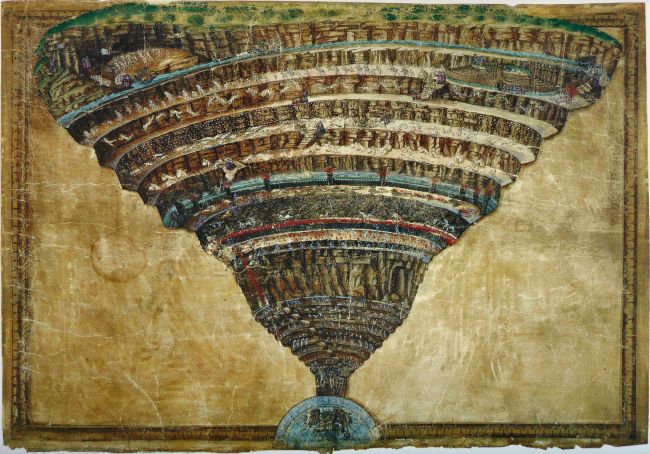
The work Botticelli did was extraordinary, and the scale of the illustrations he produced for The Divine Comedy was unprecedented. While it was customary at the time to illustrate books, it was normally only with a few small images to give predominance to the text. However, Dante's epic was so revolutionary and had such a profound influence on Botticelli that such simple illustrations would no longer suffice.
Instead, Botticelli created illustrations that were similar to paintings. They were large and complex, and he created one for each canto of the poem. Botticelli also remained extremely faithful to Dante's text which he reflected through his illustrations, which were precisely made for each scene that he deemed to be important.
Along with the illustrations for each canto, Botticelli also drew a highly detailed map of the underworld as well as a frightening portrait of Satan on a double sheet. Botticelli’s Map of Hell is the most accurate representation of the structure of Dante’s underworld ever created. It has been interpreted in many ways over the centuries, and some believe that it still houses secrets that have yet to be discovered.
Botticelli’s drawings have since been dispersed, with some being housed in the Vatican Museum, and others in museums in Berlin. Stylistically, they are comparable to his later work as they contain archaic elements and the figures within do not contain traits of realism. In 1495, Botticelli created a portrait of Dante that is believed to have been intended to adorn the library of a scholar. His portrait of The Supreme Poet clearly shows the admiration that Botticelli had for Dante.
Stradanus (Giovanni Stradano) (1523-1605)
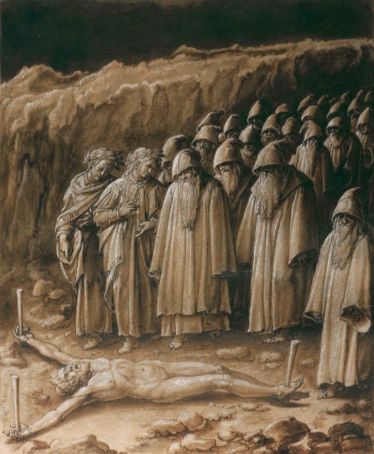
While he was among the leaders of Italian Mannerism, he did not forget his Flemish roots. It is in his series of illustrations on The Divine Comedy, produced between 1587 and 1588, where we see the presence of these two cultural components. We see the Nordic component primarily in the depictions of The Inferno that contain certain demonic figures or are set in a horrid landscape. The illustrations are preserved in the Laurentian Library in Florence.
In 1587, Stradanus was commissioned to paint a series of scenes of the damned in the various circles of hell. This included a series of illustrations and maps of the underworld. In the 2013 mystery/thriller novel Inferno by American writer Dan Brown, Brown references the illustration by Stradanus of Canto 8. In this canto, the wrathful and slothful are punished. It is also the point when Dante and Virgil cross the river Styx with the help of Phlegyas, the infernal ferryman.
William Blake (1757-1827)
In 1825, William Blake was commissioned to create 102 drawings of Dante’s Divine Comedy. However, he died two years later in 1827 and his illustrations were found in varying stages of completion.
In his drawings, Blake made of point of paying close attention to the details in Dante's poem. He focused especially on how sin, guilt, punishment, revenge, and salvation were depicted.
While he did try to stay true to Dante's vision of hell, he also brought his views of how the underworld looked. Blake was also known to have a critical attitude towards Dante, though he showed signs of intellectual sympathy towards him as well.
Paul Gustave Dore (1832-1883)
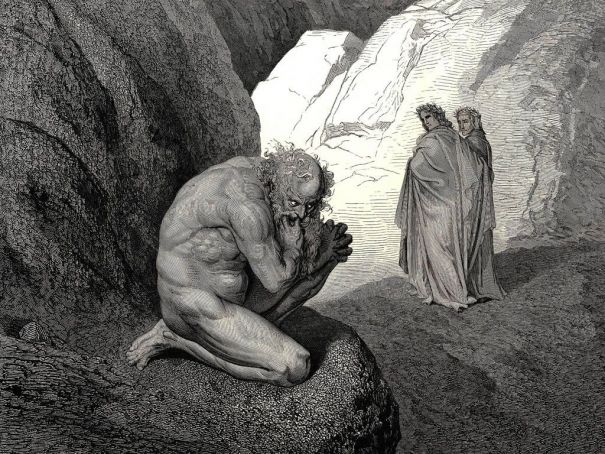
He was renowned for his style, which mixed elements of realism and romanticism, as well as the perfection of the figures he would draw. In 1856, Dore was asked to illustrate the works of Lord Byron. Later in 1865, Dore published a new illustrated version of the Bible, which was a huge success. Dore had planned on devoting a series of illustrations to The Divine Comedy as early as 1855 and would go on to complete the project between 1861 and 1868. So high was Dore's admiration for Dante, that he decided to self-finance the first book Inferno.
Dore was not alone in his admiration for Dante, as he was very popular in mid-19th-century France. As a result, Dore's illustrated book was met with immediate success. Later, Purgatory and Paradise were published by the publishing house Hachette in 1868 in one volume. Subsequently, an edition of The Divine Comedy, complete with illustrations by Dore was translated into many languages.
The illustrations of The Divine Comedy by Dore are masterpieces and they are some of the most well-known depictions of Dante's epic found today. Dore had the incredible ability to put himself in the place of Dante, so much so that one would think the two were familiar with each other. Some have even gone so far as to suggest that some kind of telepathic connection existed between Dante and Dore. While Dante invented the structure of the afterlife as it is understood today, Dore brought the structure to life with his illustrations.
William Bouguereau (1825-1905)
A producer of many realistic paintings on mythological and religious themes, Bouguereau's work was unfortunately never appreciated during his lifetime because he rejected the Impressionist and Avant-garde movements. He is best know for paintings such as L’Amour et Psyche, but his work of Dante and Virgil in Hell is what ties him to the Divine Comedy.
In Canto VII, Dante and Virgil encounter falsifiers, including alchemists, counterfeiters, perjurers, and imposters. In Bouguereau's depiction of the scene, the alchemist and heretic Capocchio is attacked and bitten on the neck by Gianni Schicchi, a usurper of a dead man's identity to falsely claim his inheritance.
Auguste Rodin (1840-1917)
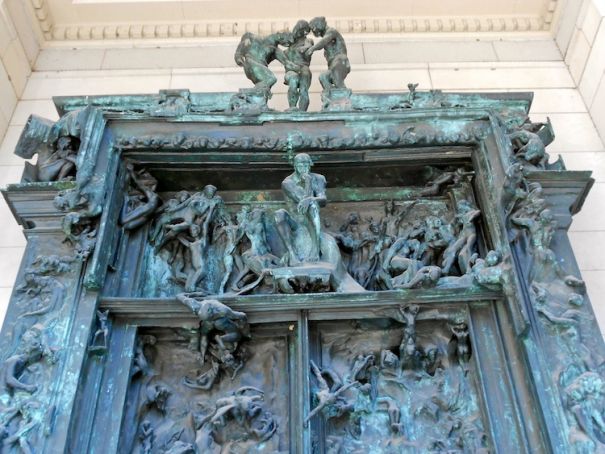
In 1880 he was commissioned to produce a sculpture for Dante known as The Gates of Hell, it remains unfinished. Inspired by the famous Gates of Paradise in the Baptistry of Florence, Rodin decided to make a portal and chose to represent Dante's hell using sketches he had been working on for years.
The portal depicts three shades on the top, all devoid of an arm, while Dante himself stands above the abyss. On the right is the recognizable figure of Count Ugolino. On the left, Paolo and Francesca are inserted into a roll of bodies. Everything emerges from bubbling lava and the convulsive figures of bodies display gestures of despair, pain, and punishment.
Franz Von Bayros (1866-1924)
Born in Austria in 1866, Von Bayros was an illustrator and author famous for his illustrations of erotic books, including The Divine Comedy. He was heavily influenced by the works of Gustav Klimt, Alphonse Mucha, and Koloman Moser. Bayros’ richly detailed, pre-Raphaelite style is shown in his depiction of the seventh circle of hell (violence).
Salvador Dali (1904-1989)
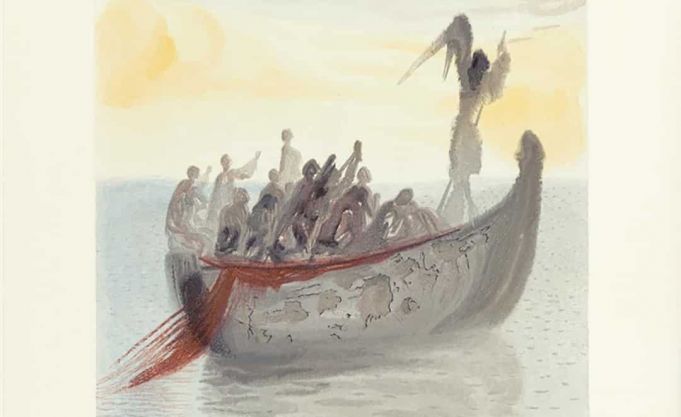
Created between 1950 and 1959, the works are masterpieces in their own right and are regarded as Dali’s most important illustrative works. Through the depictions of Dante’s epic, Dali wanted to illustrate all of the emotions and feelings that led Dante to create his afterlife.
While each one of these artists' work is different from the other, it is clear to see the scale of Dante's influence on Western art through the work that he inspired.
By Andrew Sagerson

















